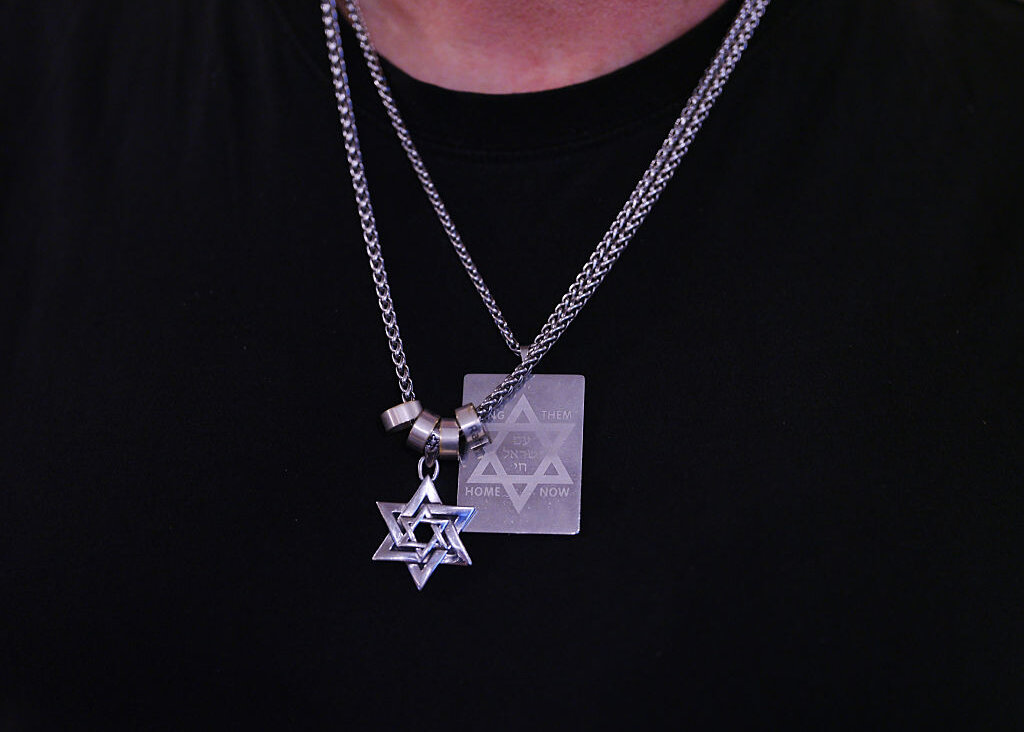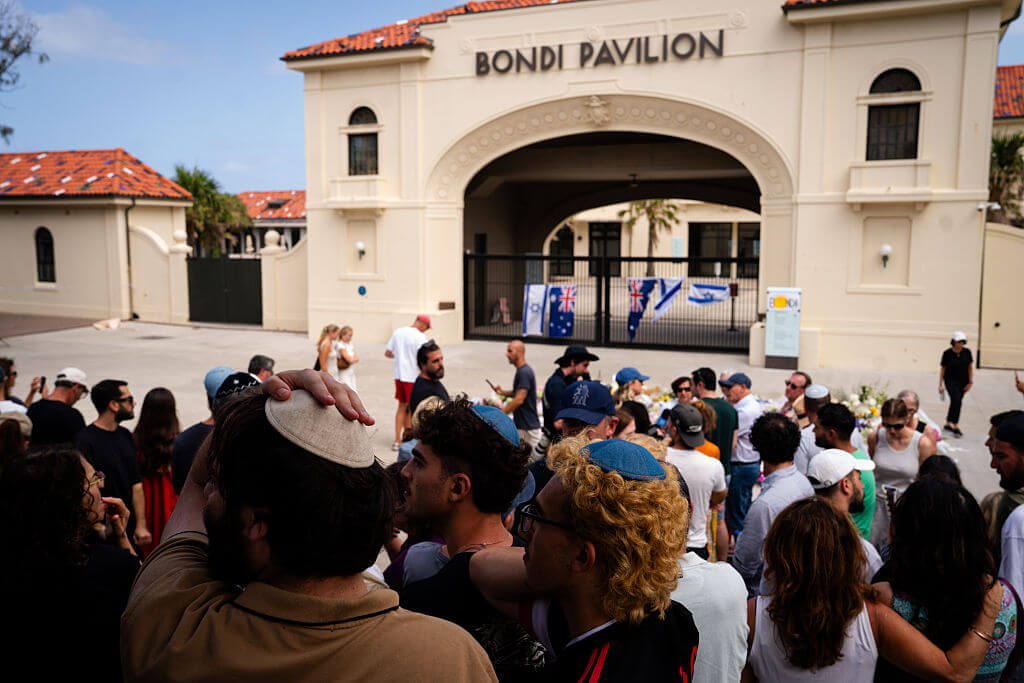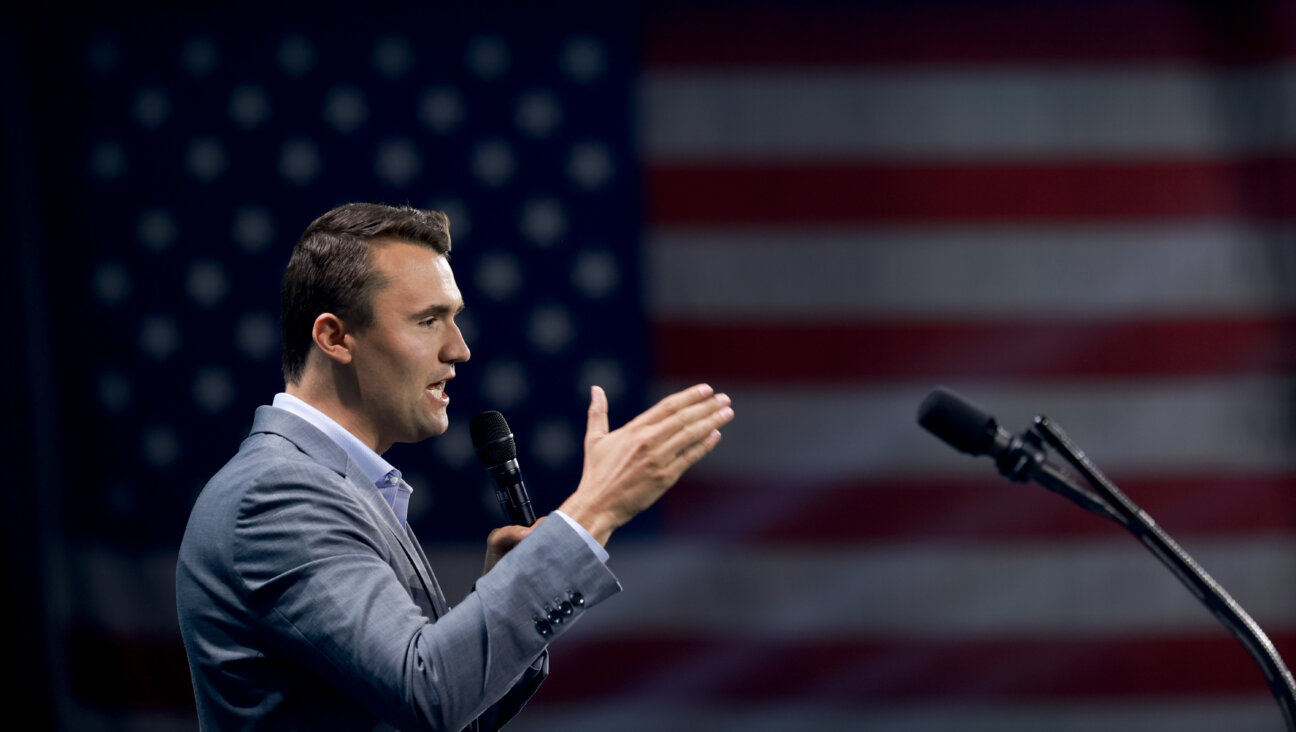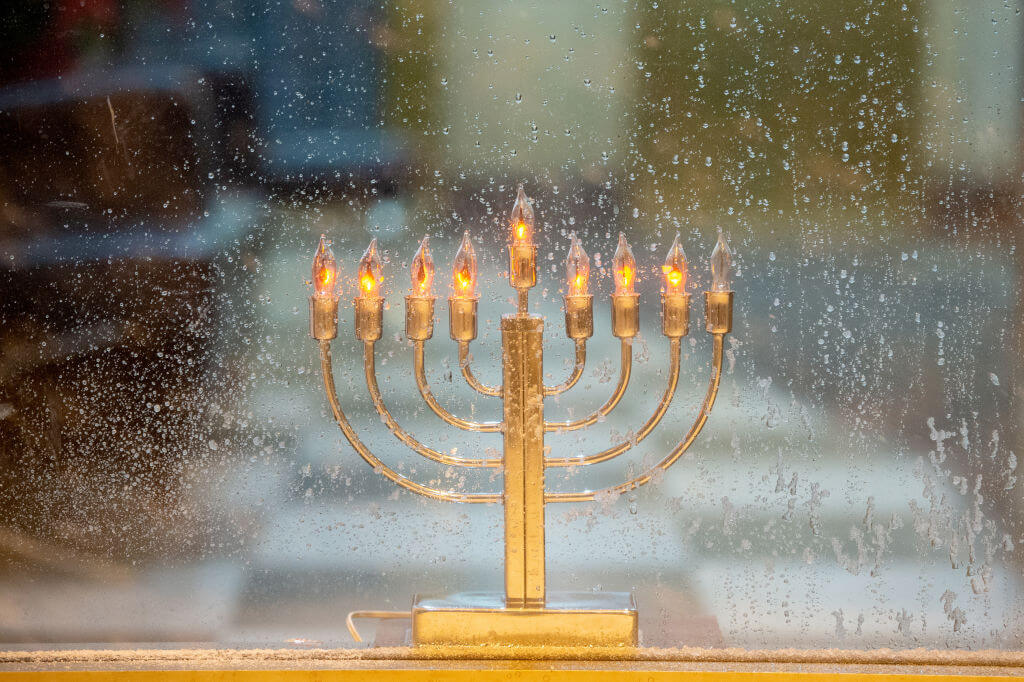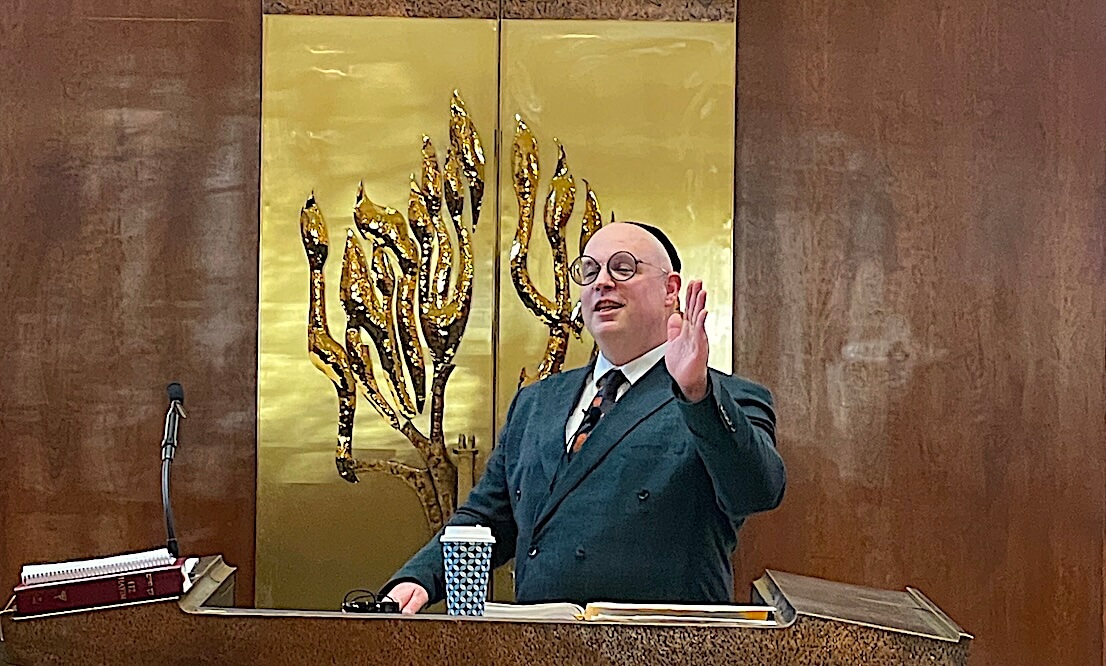How I Came Face To Face With Palestinian Nonviolent Resistance

Graphic by Angelie Zaslavsky
This compressed, rundown Arab village with roots that date back thousands of years to the biblical prophet Zachariah, now surrounded by a dozen gleaming Jewish settlements, may not appear like an obvious place to witness Palestinian nonviolent resistance.
But it is there, if you look and listen carefully.
It’s in the low-slung, trailerlike building that functions as a community school, even though it is stifling hot in the summer and often drenched with rain in the winter. In the compact grocery store run by a few enterprising women and lit by solar panels — an incongruous sight against the scruffy landscape. In the tall, cone-shaped tree where villagers have affixed a speaker to broadcast the call to prayer, because the Israeli authorities wouldn’t allow them to complete a nearby minaret whose jagged, unfinished exterior reaches half-heartedly into the sky.
“There’s nothing legal here,” acknowledges Abu Ibrahim, a member of the village council who spoke through a translator to a group of American Jewish visitors. And that’s the point of the Palestinians’ resistance: Unable to get official permission to build a school, expand a home or a business, or erect a proper place for worship, the residents of Khaled Zakaria went ahead anyway, risking arrests and fines to provide a radically scaled-down version of the communal amenities enjoyed by the Jewish settlers across the road.
This is the face of Palestinian resistance that is too often ignored. It is the 2017 Middle East equivalent of riding the bus or sitting at the lunch counter, played out in ordinary, everyday life. And it challenges the narrative that Palestinians resist only with stones, knives and bombs, and not also with words, ideas, civil disobedience and civic deeds.
To acknowledge the breadth and depth of Palestinian nonviolence today is not to ignore or minimize the deadly rage trained all too often upon Israelis, and it does not justify the way that some Palestinian political leaders have stoked that anger to hide their own corruption and incompetence.
But it is to admit to this discomforting fact: Many Palestinians have been quietly, and at times admirably, resisting Israeli occupation of their villages and cities and farm lands for 50 years now. What they do may be illegal, but it is not immoral. It deserves notice and respect.
And once we notice what is truly happening, and respect these efforts, then what? You can’t honestly look at the conflict the same way again.
‘YOU ARE NOT CASUAL OBSERVERS’
I was among the American Jews who met with Abu Ibrahim one morning in early November, before the region was unsettled by President Trump’s recognition of Jerusalem as the Israeli capital. We stood on the roof of a low building, next to the half-finished minaret.
It was the second day of a four-day intensive trip through the Palestinian territories, organized by Encounter, a nonpartisan educational organization intent on exposing a broad range of American Jews to the Palestinian perspective of the Israeli-Palestinian conflict.
The terrain wasn’t new to me, as I have traveled through the West Bank many times. Nonetheless, I was intrigued by the roster of Palestinians on the itinerary, and by the opportunity to share this experience with Jewish leaders from cities, pulpits and professional perches around the country. (Encounter subsidizes the travel for participants; the Forward paid my way to Israel. I did accept modest room and board.) For some, simply meeting with certain Palestinians was controversial, and I have kept the identities of my fellow travelers confidential unless those travelers gave me permission to quote them.
The Encounter pedagogy can be frustrating. The approach is to foster knowledge and understanding, not to create another forum for dialogue. Participants were invited to question the Palestinian speakers but not to debate, and I heard things that I would have disputed if I could, and I recount statements here with which I don’t necessarily agree.
The underlying assumption is that American Jews are familiar with the Zionist narrative but too many are unaware of how that narrative intersects with the daily life of the 2.5 million Palestinians under some sort of Israeli military control. This four-day crash course is designed to address that omission — and to remind us that it is possible both to love Israel and to deeply empathize with those Palestinians living under a troubling status quo.
“You American Jewish leaders, you are not casual observers to the conflict. You are active participants in the conflict,” said Sam Bahour, an activist businessman who spent enough time in the United States to know how to connect to this audience and is successful enough that he can be outspoken.
That morning, he had left his home in Ramallah at 6:40 a.m. for what should have been a 20-minute trip to meet us at a Bethlehem hotel. But the line at the checkpoint delayed him until nearly 9 a.m.
“The system of occupation is made for me to say that I don’t want to go to Bethlehem anymore,” he said with well-rehearsed irritation. “But I’m here because you are Jewish. And what you see will not sit well if you have any value system at all.”
At a time when many American Jews are disenchanted with this conversation, feel no hope in a peace process, feel rejected by the Israeli government, are fed up with the Palestinian leadership and disgusted with our own, Bahour’s words — echoed by others that week — landed like a metaphorical gauntlet. Especially when examples of Palestinian nonviolent resistance undermine one of the basic assumptions of American Jewish attitudes toward the conflict: that there is no peace because all Palestinians worship violence.
What if that isn’t always true?
‘REFUGEES IN OUR OWN COUNTRY’
First, there are data. One morning, Jamil Rabah, co-director of Near East Consulting, shared the results of his latest polling of Palestinians in the West Bank and Gaza. Roughly two-thirds favor a peaceful approach to ending the conflict, and one-third advocate for armed struggle. Rabah added his personal observation that more than 90% of those who do support violence say it should be trained against Israeli soldiers and settlers who carry weapons, not against civilians.
I’ll be honest: I’m skeptical of that 90%, given all the innocent Israeli civilians killed and injured. But I compared Rabah’s numbers with other surveys, and did find the same overall pattern. Polling by the Palestinian Center for Policy and Survey Research, done in October, found that 67% support nonviolent, popular resistance while 35% say that the most effective means of creating a Palestinian state alongside Israel is armed action.
While trust in political leadership, both Palestinian and Israeli, is at dangerous lows, a healthy majority says it believes in nonviolence.
Yet when many American Jews close their eyes and imagine a Palestinian activist, they see only a young man with a bandana wrapped around half his face hurling stones and spewing anger. We fail to notice that for every one of such men, there are two like the Palestinians I met at the Aida refugee camp just north of Bethlehem.
I expected a camp filled with tents or other flimsy structures, and when Aida was established in 1950, that was indeed what it looked like, housing refugees from two nearby villages. Since then, its population has swelled. It now is home to residents from 27 villages in what can best be described as the Palestinian equivalent of an overcrowded urban ghetto.

Salah Ajarma runs a youth center in the Aida refugee camp. Image by Ruth Wolman
“We built everything ourselves,” said Salah Ajarma, who was born in the camp. All these years later, the temporary has become permanent. The streets are narrow and winding, canopied by wires strung in loops and tangles above our heads. Walls are scarred with graffiti and pockmarked with bullet holes. The smell of sewage chased after us like a rabid dog.
“We live in jail,” Ajarma said as we walked through the streets darkened by a lack of electricity. But this “jail” has a deceptively open door. Residents are not required to stay in Aida — Ajarma’s uncle lives in Jordan; his sister is in Ramallah, and he has a brother in the States — but they argue that they can’t afford to move.
And they are reluctant to surrender their status as refugees in the hopes that one day they will return “home.” At the gate to the camp is affixed a giant replica of a house key.
Is holding on to this hope futile, unrealistic? I think so. It fits into the refrain that Palestinians choose to remain refugees three generations on. But it’s their decision to resist and make the best of it.
The camp has no health center and only one school, so residents created a playground and soccer field on the camp’s border. Ajarma is co-founder and director of the Lajee Center, which provides cultural and educational opportunities to the youth of Aida.
Most impressive is the work of women like Islam Jameel, also born in Aida. After she gave birth to a son with cerebral palsy, she became aware of the limited resources available to care for him and other disabled children. She and 12 women from Aida and the nearby Beit Jibrin camp formed Noor Women’s Empowerment Group to help their families with equipment, education and support to overcome the stress and stigma of parenting a disabled child.
“I believe we have God for everyone,” she said in halting English. “All religions say you should help each other, especially the children.” These efforts are made harder by the dictates of the Oslo Accords, which carved the West Bank into three areas with three different systems of governance and military control. The majority of control of Aida fell under the Palestinian Authority, in what is known as Area A, but the periphery of the camp fell under Israeli control, known as Area C. (Area B comprises towns and villages, where the P.A. holds civil authority but the Israeli military controls security.) When the separation barrier was later constructed, it limited residents’ access to jobs in Israel and East Jerusalem.
“Now it takes 10 minutes to walk to the checkpoint, and you wait another three hours to cross,” Ajarma said. “It’s difficult to be a refugee in your own country.”
‘LET ME FEEL EQUAL’
The Israel Defense Forces currently operates 27 permanently staffed checkpoints in the West Bank and many other temporary ones. On the third day of the Encounter Intensive, our group drove to Jerusalem from Bethlehem through Checkpoint 300.
Even those who, like myself, have been through checkpoints before — have been through this checkpoint before — were still overcome by fear and disgust. It is disempowering to be herded through one crowded corridor after another, a maze of concrete and barbed wire, hot in the summer, cold in the winter, inhospitable all the time.

Graffiti art on the walls of the Aida refugee camp still valorize young men who throw stones. Image by Elie Weinstock
And then, incongruously, on the other side, as if to drive home the point, there is an Israeli tourism poster featuring two blond women at the beach.
One participant in our group, whose children and grandchildren live in Israel, said, “I was not displeased that there are security precautions to keep my family as safe as possible.”
Of course, Israel has to protect itself. IDF soldiers have been stabbed at checkpoints. Would-be terrorists have been thwarted. Israelis deserve to manage their own security.
But must it be this way? Somehow, Israel’s celebrated startup technology hasn’t made it to the checkpoints — where the wait can be hours long without explanation, just because. The guard tower at Checkpoint 300 struck some as a blatant and dangerous projection of power, reminiscent of a prison or worse. Afterward, one Orthodox rabbi said: “I feel dirty. I feel like I need to go to the mikveh.”
Many thousands of Palestinians endure this every day. We hear about the instances of violence, and they should be more adamantly condemned. But we don’t hear about the far more common stories of grudging acceptance.
This is their nonviolent response.

Disabled children are helped by a program begun by mothers in Aida refugee camp. Image by Noor Women's Empowerment Group
So, too, is the way they deal with the fact that movement is restricted by a patchwork arrangement that determines where Palestinians may live, work, drive, study and recreate. Here’s one example: Nimala Kharoufeh, who teaches nonviolence and women’s empowerment, is from a family separated by political boundaries outside their control. By a quirk of birth and fate, she and her mother may live only in East Jerusalem, while her father and siblings may live only in Areas A, B or C. So they are forced to keep two separate family homes. She and her siblings must drive on different roads. To maintain her East Jerusalem residency — a prized objective in Palestinian life — she cannot be away for more than 180 days, and had to return regularly when she was studying in Europe.
“Why to have two houses?” she said one evening, in earnest English. “At least I should have the freedom to choose where to live.”
But she accepts it and focuses instead on training young people to practice nonviolence. Isn’t that a form of resistance?
Dina Zabaneh is a project officer for Fast Forward, in Ramallah, which helps Palestinian entrepreneurs turn their ideas into startup businesses. She does this against enormous odds, including the obstacles faced by women in the patriarchal Palestinian society.
There is only 2G technology, which allows only limited data transmission by mobile phone. No GPS system. No PayPal. No Palestinian currency. It is difficult to acquire credit. And men often do not take Zabaneh seriously. “It’s like living in the Stone Age,” she said.
Educated abroad, from an economically comfortable family, Zabaneh could work elsewhere but chooses to persevere in her homeland. “There is where I think I can actually help,” she said.
There are many other examples. One of the most touching stories we heard was from Osama Elewat. First jailed and put into solitary confinement when he was 14 years old, he has foresworn violence and now works with former Israeli soldiers to promote peaceful resistance in his community.
“I have no problem with Judaism,” he said. “I have no problem with Israel. I have a problem with my life under occupation. I have a problem with discrimination. Let me feel equal to everyone.”
It’s always possible that all these Palestinians are rare exceptions. Even if that were true, don’t we have a moral obligation to acknowledge their existence?
‘OUR HAND IS OPEN’
My experience with Encounter prompted me to rethink two other aspects of nonviolent resistance. The first is the use of “Palestine.” At the Forward, opinion writers may use “Palestine” just as they may use “Judea and Samaria” to describe the West Bank, because such terms reflect their own ideology.
But elsewhere in our reporting we do not, nor do I in my own writing, the theory being that Palestine as an independent nation does not (yet) exist. I do not know its borders, where it begins and ends. It may be an aspiration, but as a journalist I deal in reality.
After listening to Palestinians for days, however, I have come to realize that the assertion of statehood implied in the use of “Palestine” is itself a form of nonviolent resistance, a declaration of national identity not dependent on outside recognition and not accomplished by armed force.
I am not ready to embrace the term myself, but I have a newfound respect for what it represents to those who do.
Even more of a challenge is the movement to boycott, divestment from and sanction Israel. Some of the Palestinians we met were opposed to it, fearful that it would hurt their fragile economy. Palestinians work in Israel, their produce comes from Israel, they want investment from Israel. To them, Israel is isolated at their peril.
Many others endorsed the movement in one version or another, arguing that it is a nonviolent, tactical approach used successfully against other discriminatory systems. Mahmoud Muna, marketing and events coordinator at the Educational Bookshop, in East Jerusalem, defined his own form of “smart BDS.”
“I do not boycott based on color or religion. I will boycott based on politics,” Muna said. “If you are a racist, I choose not to sell your book, I will not invite you to speak. If your institution has an office in a settlement, I won’t work with you.”
Ironically, Palestinians are debating BDS in a way that American Jews increasingly cannot. Support for any form of BDS in the United States has become a line so bright that it is blinding. Personally, I remain opposed to boycotts, sanctions and other actions that unfairly single out Israel, and I’m highly suspicious of the underlying motives of the movement. Does it want to force an end to the occupation? Or put an end to Israel?
Nonetheless, we need more discussion about this and other nonviolent tactics, not less. Even if it makes us uncomfortable as lovers of Israel. Especially because it makes us uncomfortable.
“It’s enough, the killing and the bloodshed. We should stop it,” Abu Ibrahim pleaded at the end of our visit to Khaled Zakaria. “We want peace. Our hand is open — we want to find another hand coming toward us.”
It is a message I heard again and again, and I believe it is genuine. It does not negate the violence, the terrorism, the rejection of Israel espoused by some Palestinians and their supporters. But it should cause us to recognize the other hand reaching out toward us and to be brave enough to grasp it.
Jane Eisner is the Forward’s editor-in-chief. Contact her at [email protected] Sign up here for her weekly newsletter, Jane Looking Forward.

